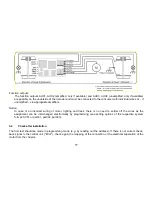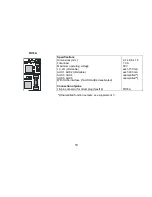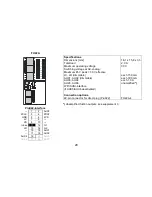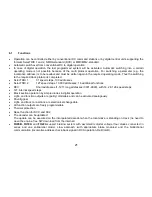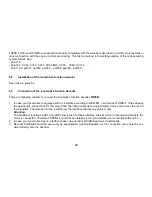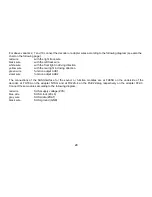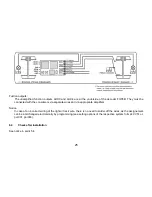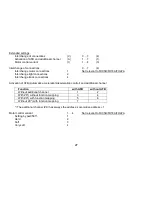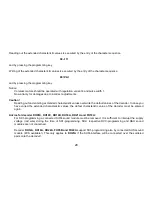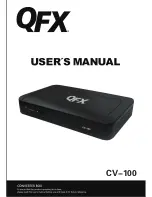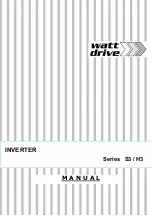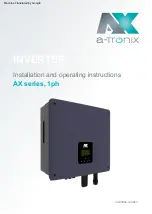
13
5.1
Functions
Operation can be controlled either by conventional DC command stations or by digital central units supporting the
formats SelecTRIX 1 and 2, NMRA-standard (DCC) or MM1/MM2-standard (
PD05A: no MM and DC-analog,
PD12A: only DCC
)
Automatic switch over from conventional DC to digital operation
In case of digital operation the last programmed system will be activated. Automatic switching into a certain
operating mode is not possible because of the multi-protocol operation. For switching a parameter (e.g. locomotive
address) is to be readout and must be written again in the required operating mode. Thus the switching to the
required track protocol is completed.
SelecTRIX 1
31 speed steps, 100 addresses
SelecTRIX 2
127 speed steps, 10.000 addresses, 16 additional functions
DCC
short addresses (1-127), long addresses (0001-9999), with 14, 28, 126 speed steps
State of art load regulation, in this way an especially smooth control mode
Different control variants for an optimal adaption to the motor
127 internal speed steps
Adjustable motor frequency (low frequency, 16 kHz, 32 kHz) (
PD05A and PD12A: only 16 kHz, 32 kHz
)
Block section operation by simple diodes in digital operation
Light- and function outputs are (partly) dimmable and can be activated analogously
Shunting gear
Motor-, light- and track connections electronically changeable
All function outputs are freely programmable
Thermal protection
Reset function for DCC and SX2
The decoder can be updated:
Updating can be executed on the incorporated decoder when the locomotive is standing on track (no need to open
the engine, free SW-download from the internet)
Decoders support braking with asymmetric digital voltage (four diodes connected in series and one antiparallel
diode), slow approach (with appropriate brake modules) and the bidirectional communication (locomotive address
check-back signal in DCC-operation, RailCom®).
Summary of Contents for DH05C
Page 68: ...68 Blank page for your notes...

















